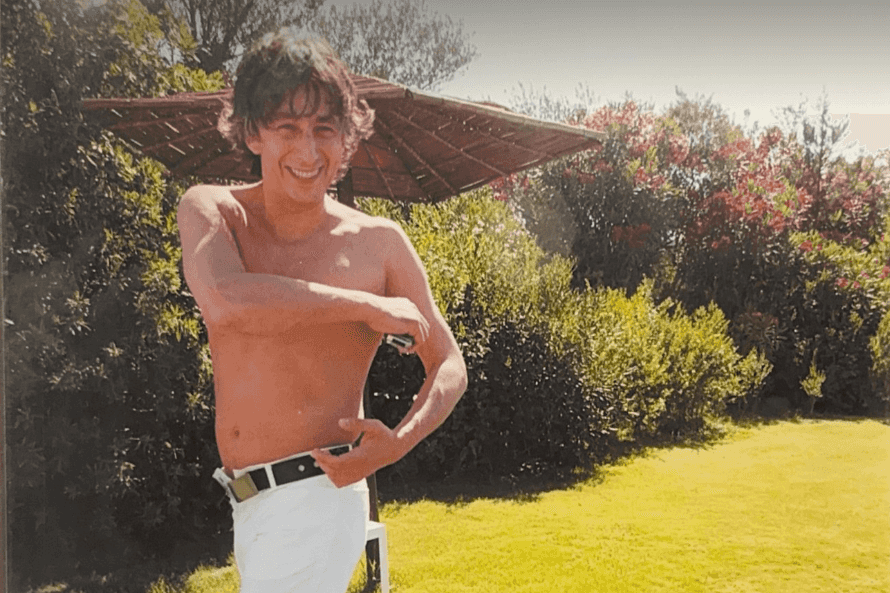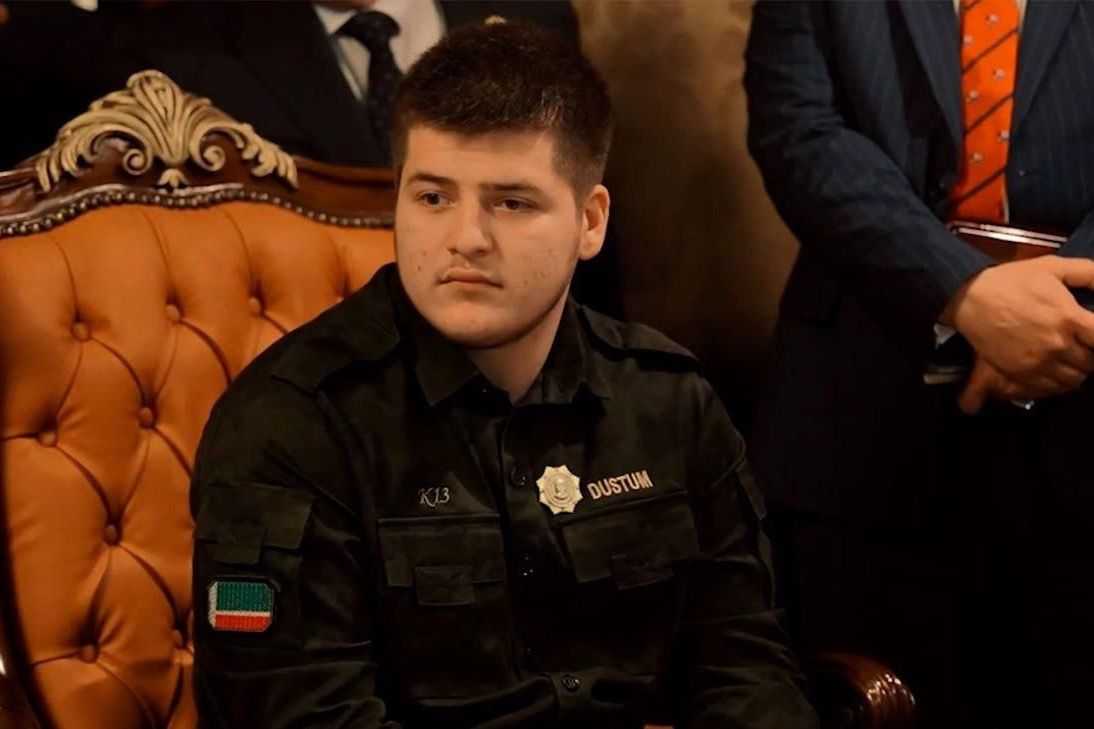
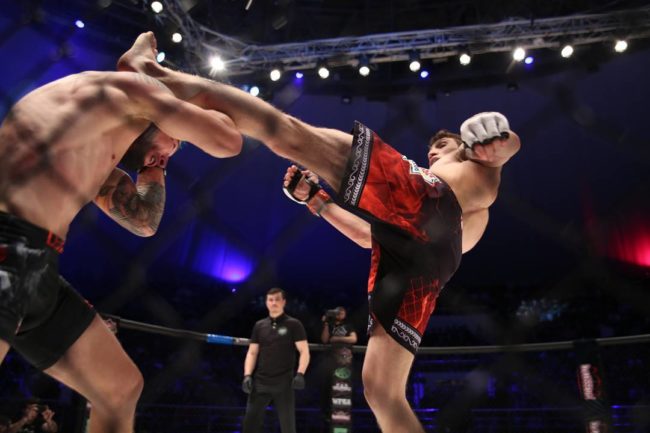
 The North Caucasus is well known for its Olympic champion wrestlers. However, a move towards the more brutal ‘mixed martial arts’ is leading some to question why such a violent sport is being allowed and even encouraged, whether or not it is compatible with local traditions, and if it is engendering violence.
The North Caucasus is well known for its Olympic champion wrestlers. However, a move towards the more brutal ‘mixed martial arts’ is leading some to question why such a violent sport is being allowed and even encouraged, whether or not it is compatible with local traditions, and if it is engendering violence.
Mixed martial arts (MMA) — commonly known in Russia as ‘combat without rules’ — is a sport in which hitting an opponent once they are down is simply par for the course. It has gained more and more popularity every year with young people in the Caucasus. This relatively new discipline has attracted young people from other, classical combat sports. The spectacularity and intensity of MMA fights has been compared with gladiatorial fights, because of their excessive brutality and the abundance of blood in the ring. Many in the North Caucasus are less enamoured with the sport, and are beginning to ask: who is bringing such a thing to the Caucasus? And why?
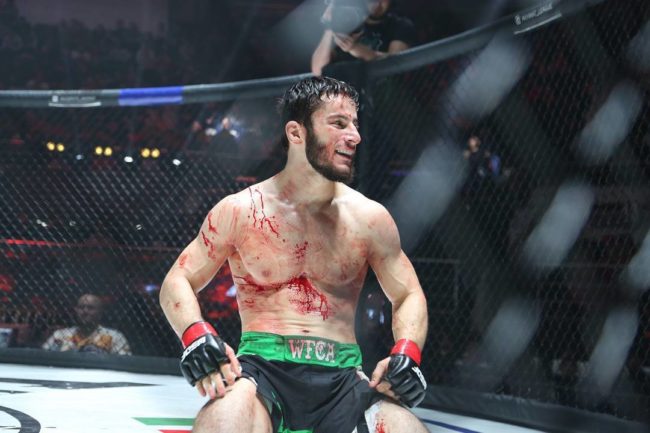
Last week, brawls broke out between spectators during two MMA competitions in the North Caucasus — in Ingushetia and Daghestan. In the first brawl, Ingush fans became upset when a Daghestani fighter took off his T-shirt in the ring, which they considered to be disrespectful. An initial shouting match quickly developed into pandemonium — Caucasus-style. Despite attempts by Ingush President Yunus-Bek Yevkurov, who was present at the competition, to calm the situation, the fighting only ended once police intervened.
Several days later, another brawl broke out; this time in Daghestan. After the end of a match, local fighter Aziz Dzhumaniyazov kicked his opponent, Vladimir Mineyev, as he lay in the ring. Mineyev jumped up and hit Dzhumaniyazov. The audience swarmed the ring and a brawl unfolded. The fighters later apologised to each other, and Dzhumaniyazov was disqualified for his actions.
The spectacle of blood
In the North Caucasus, the three easternmost republics of Daghestan, Chechnya, and Ingushetia have seen the most success in MMA contests. In order for these battles to better resemble gladiatorial fights, a large multilevel hall was built almost overnight in Grozny; it was named ‘the Colosseum’. Virtually all fights between reasonably well-known fighters are held here.
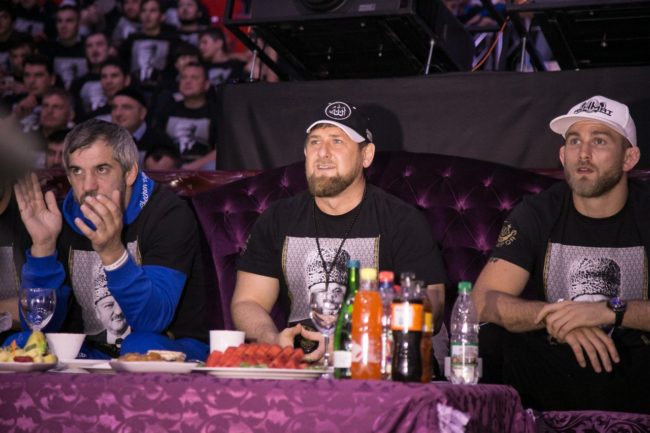
Chechnya is one of the main centres of MMA in the North Caucasus, and President Ramzan Kadyrov is a big fan. He invites famous sportsmen to attend the bouts, and as they sit together behind a table lavishly set with fruit, he frantically roots for blood. In the past he would run out into the ring to shout at the referee; now others do this for him. Chechnya pays big money for famous sportsmen to show up at MMA events. Former world champion boxer Floyd Mayweather recently attended a fight, with some media outlets claiming that he earned $10 million for the trip.
Fighting for money and success
There are two main MMA clubs in Chechnya: Akhmat (named after Kadyrov’s late father) and Berkut (golden eagle). Most of their members are young fighters who left their previous disciplines — wrestling, boxing, sambo, or judo — to begin competing in MMA instead. Many young sportsmen dream of joining these clubs, because they offer the possibility of quickly rising to the top, and earning a lot of money in the process. At the age of 28, it’s possible to be a world champion in the fighting elite — the UFC — where sportsmen receive enormous royalties for participation alone.
The difficult economic situation in the region is making young and healthy Caucasian men do something which was previously unheard of, to hit each other in the face. This is a cultural and religious taboo. In the mid-2000s, an underground fight took place between Chechen and Russian special forces. On the one side, the Chechen battalion Zapad (West), on the other, the Russian Interior Ministry special forces, Vityaz (Knight). After a Chechen fighter defeated his Russian opponent, he said that if the Russian opponent knew how much he needed that money (according to one source, the winner was paid $100,000), he would not have even shown up in the ring.
‘An unseemly occupation for a Caucasian’
Because of the increasing popularity of MMA, other disciplines formerly popular in the Caucasus have become marginalised. Famous Chechen wrestling coach Degi Bagayev, who has coached three Olympic champions in freestyle wrestling, has been a vocal opponent of MMA. Despite its popularity, he has never attended a fight, comparing it with gladiatorial fights — with slaves fighting in the ring, and masters sitting at tables set lavishly with food and drink. In an interview shortly before his death in a 2014 with Bortsovsky Krug he said that young people were becoming increasingly brutal seeing all of this.
‘In recent years, MMA has been gaining popularity, but I have a prejudice towards this sport. I’m closer to Olympic martial arts, whose representatives bring glory to the country with Olympic medals. Such sports, unlike MMA, don’t negatively affect health. I am convinced that young men shouldn’t be allowed to engage in MMA, which in many cases are no more than banal brawls. In almost all variations, fighters are allowed to kick each others’ heads, mount an opponent, and to hit his face or head. It gives rise to cruelty and aggression in teenagers’, Bagayev said.
Many ordinary people have also expressed discontent, not only at the brutality of the fighting, but also with its incompatibility with local tradition. Ayubkhan Ismailov, a native of the Chechen town of Urus-Martan, told OC Media that to beat each other publically while wearing nothing but underwear should be a shameful thing for a Chechen to do.
‘My personal opinion is that these so-called ‘fights’ should have been banned in the Caucasus long ago. It is an unseemly occupation for a Caucasian, and contradicts our customs and traditions. How can you beat each other in front of people? And then walk around all bruised without shame or conscience as if nothing happened. In pants. If one can even call it a fight — it has all been turned into a show’, Ismailov said.
Some observers think that changes in culture and behaviour are being cultivated by the popularity of MMA, with the long valued Chechen trait of sobar (patience) being increasingly interpreted as weakness and cowardice, while aggression is becoming seen as manly and courageous. Former chess player Ruslan Yandarbiyev told OC Media that it never used to be so. Instead, a man used to be distinguished by his patience.
‘What has happened to our customs and traditions? Where is the deference to our elders? How can a man with his face messed up parade around in front of people? Young people are becoming desensitised to these beastly fights, where rich people make money on placing bets, like on dogs’, Yandarbiyev said.
Opponents of MMA bring up another reason for which Muslims shouldn’t engage in such disciplines. In Islam, there is a clear prohibition against hitting someone in the face, especially for money. Young Muslim scholar Khamzat Sadayev tells OC Media that this argument should be enough for Caucasian fighters to refuse to hit each other.
‘In Islam, punching someone in the face is forbidden. This should be argument enough. When it comes to normal wrestling, even the prophet Muhammad, peace be upon him, liked it’, Sadayev said.
The widespread interest of young Caucasians in fighting sports has created a stereotype in Russian society of Caucasians as mentally limited, and unable to control themselves. The fact that this aggression has been imposed on them, rather than stemming from their ‘nature’, is something that many in Russia don’t even suspect.



